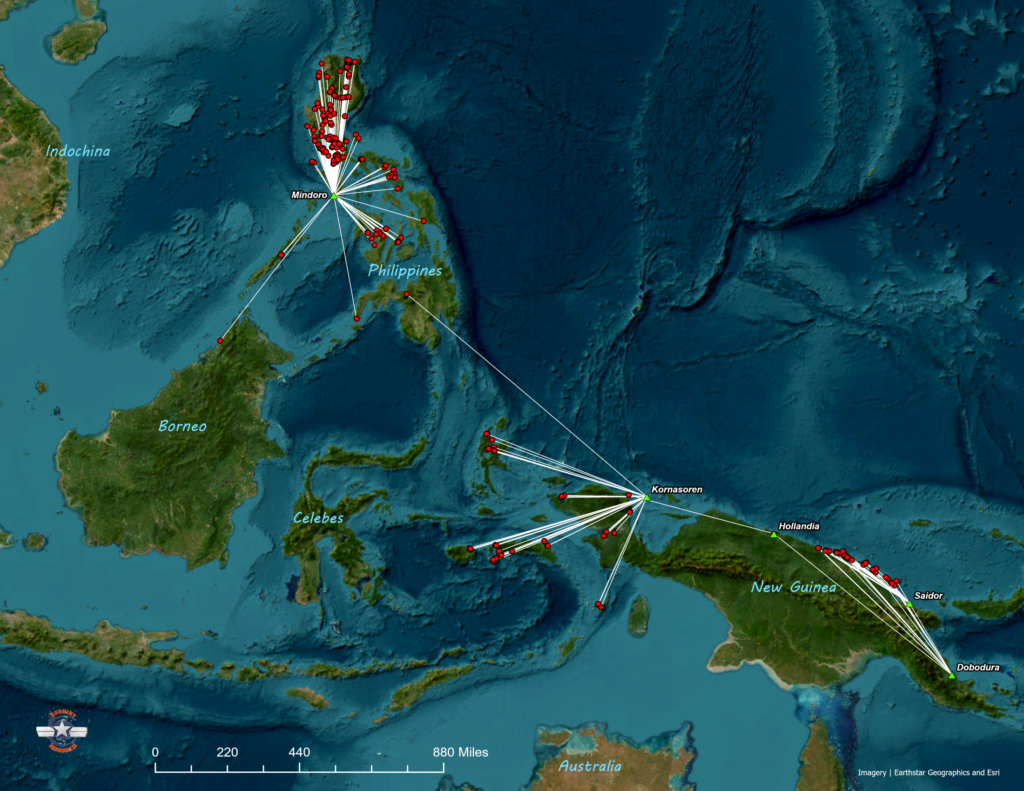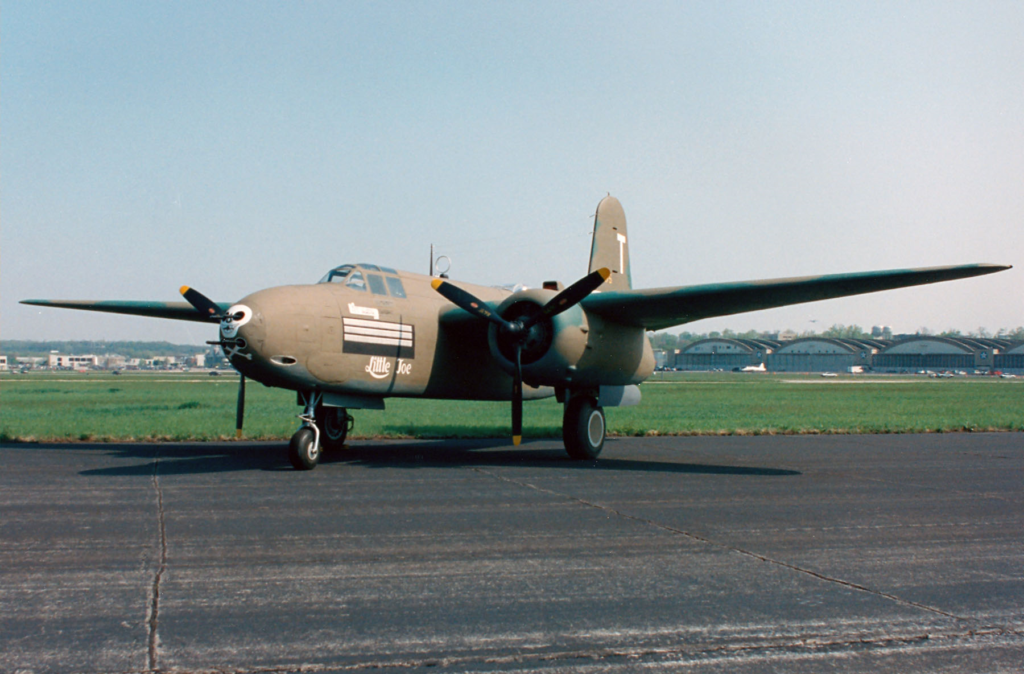The 417th Bombardment Group (Light) was activated in late March 1943. After training with the A-20 twin-engine bomber for eight months, they received orders to join the war in the Pacific. On January 28, 1944, they made landfall at the staging area at Cape Sudest, on the northeastern coast of New Guinea, and then moved to the airfield at Dobodura with their assignment to the 5th Air Force. They arrived without any airplanes, but a large contingent of pilots and ground crews was sent to Brisbane where they assembled Douglas A-20 Havoc airplanes and ferried them to Dobodura.
They flew their first combat mission on March 26, 1944. Missions flown from Dobodura and Saidor were a mix of bombing from medium altitude and minimum altitude bombing/strafing attacks. The medium altitude bombing missions were generally led by a B-25 Mitchell since the A-20 was not equipped with a bombsight or bombardier. On those missions, the formation of A-20s would watch the lead airplane and drop their bombs when the B-25 did. After moving to the base at Kornasoren on Noemfoor Island, their missions were more commonly flown at minimum altitude.

The Unit History of the 417th Bomb Group (on AFHRA microfilm reels B0541 and B0542) recorded 507 missions flown between March 26, 1944 and July 13, 1945. The 417th was in the midst of a move from Mindoro to Okinawa at the end of hostilities. I came across some online references stating that the 417th had been based at Tacloban, Leyte for a brief period during December 1944, but I found no mention of that move in the Unit History.
The map above does not display each of the 507 missions, but rather, shows targeted locations to provide an overall view of their participation in the war effort.

The 417th Bomb Group was disbanded in November 1945.
